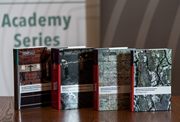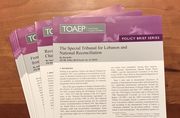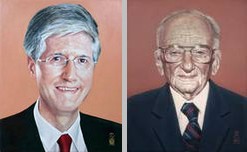Table of contents:
P.25. Evidence of killing by summary execution.
P.26. Evidence of a deliberate shelling.
P.27. Evidence of destroying property.
P.28. Evidence of repeatedly firing rockets.
P.30. Evidence of sinking a ship.
P.32. Evidence of shooting at a plane
P.33. Evidence of the visibility of the emblem.
P.34. Evidence inferred from an utterance, a document or a deed.
Element:
P.25. Evidence of killing by summary execution.
A. Legal source/authority and evidence:
ICRC, Customary International Law, Volume II: Practice, Part I, p. 504:
"147. In its report in 1993, the UN Commission on the Truth for El Salvador held that the summary execution of a Spanish doctor who had entered El Salvador to work as a doctorfor the FMLN was a flagrant violation of IHL and human rights law.( )162. The Commission described the summary execution of a French nurse working in an FMLN hospital by a unit of the Salvadoran Air Force as a deliberate attack on medical personnel in violation of IHL.163"
"162 UN Commission on the Truth for El Salvador, Report, UN Doc. S/25500, 1 April 1993, Annex, pp. 89-92.
163UN Commission on the Truth for El Salvadore, Report, UN Doc. s/25500, 1 April 1993, Annex, pp. 87-89."
"926. In a communication to the press issued in 2001 following the killing of six ICRC staff members by unidentified assailants in the DRC, the ICRC condemned "in the strongest terms this attack and the flouting of the red cross emblem"955
"955ICRC, Communication to the Press No. 01/14, Six ICRC staff killed in Democratic Republic of the Congo, 27 April 2001."
P.26. Evidence of a deliberate shelling.
A. Legal source/authority and evidence:
"UN Security Council, Res. 467, 21 April 1980, §3:
"The Security Council condemns ( ) the deliberate shelling of the headquarters of [UNIFIL] and more particularly the field hospital, which enjoys special protection under international law".
"634. In 1994, in a report on the situation of human rights in Rwanda, the Special Rapporteur of the UN Commission on Human Rights noted that a shell had hit an ICRC hospital ( )663".
663UN Commission on Human Rights, Special Rapporteur on the Situation of Human Rights in Rwanda, Report, UN Doc. E/CN.4/1995.7, 24 June 1994, §31."
P.27. Evidence of destroying property.
A. Legal source/authority and evidence:
"918. In 1993, the Brazilian Red Cross condemned the destruction of the ICRC delegation in Huambo (Angola).947"
"947Brazilian Red Cross, Communication to the Press, 17 August 1993"
P.28. Evidence of repeatedly firing rockets.
A. Legal source/authority and evidence:
"563. In a press release in 1993 issued in the context of the conflict in Afghanistan, the ICRC stated that:
"589 ICRC, Press Release No. 1745, ICRC protests attack on Kabul hospital, 19 April 1993".
A. Legal source/authority and evidence:
"747. In 1996, in report on the situation of human rights in the Sudan under the title "Human Rights violations- Abuses by parties to the conflict other than the Government of Sudan", the Special Rapporteur of the UN Commission on Human Rights noted that OLS had reported that, despite security assurances from local authorities, a UNICEF ambulance had been ambushed and one of the wounded person it was transporting had been killed.784"
"784UN Commission on Human Rights, Special Rapporteur on the Situation of Human Rights in the Sudan, Report, UN Doc. E/CN.4/1996/62, 20 February 1996, § 78."
P.30. Evidence of sinking a ship.
A. Legal source/authority and evidence:
"730. In the Dover Castle case in 1921, a German court acquitted the commander of a German submarine of sinking a hospital ship and killing six members of its crew in violation of the customs and laws of war. The Court found that the commander had sunk the ship in execution of orders and could not, therefore, be held responsible for the ensuing violations of the law.765"
"765Germany, Reichsgericht, Dover Castle case, Judgement, 4 June 1921, p. 429"
A. Legal source/authority and evidence:
"927. In 2001, following the bombing of a ICRC compound by US aircraft in Kabul, the ICRC recalled that "international humanitarian law obliges the parties to the conflict to respect the red cross and red crescent emblems.956"
"956ICRC, Communication to Press No. 01/43, ICRC warehouses bombed in Kabul, 16 october 2001."
P.32. Evidence of shooting at a plane
A. Legal source/authority and evidence:
"822. In 1996, in a report on the situation of human rights in the Sudan, in a section entitled "Human Rights violations- Abuses by parties to the conflict other than the Government of Sudan", the Special Rapporteur of the UN Commission on Human Rights reported that an ICRC plane was shot and hit when preparing for landing. ( )861."
"861UN Commission on Human Rights, Special Rapporteur on the Situation of Human Rights in the Sudan, Report, UN Doc. E/CN.4/1996/62, 20 February 1996, § 78."
P.33. Evidence of the visibility of the emblem.
A. Legal source/authority and evidence:
ICRC, Study on Customary Rules of International Humanitarian Law, Volume II: Practice, Part I (2005), p. 529:
"544. In 1992, in a report on the situation of human rights in the territory of the former Yougoslavia, the Special Rapporteur of the UN Commission on Human Rights concluded that hospitals had been deliberately attacked, even though the Red Cross emblem was clearly visible or the building was itself clearly visible from the positions held by the Bosnian Serbs.567".
"567UN Commission on Human Rights, Special Rapporteur on the Situation of Human Rights in the Former Yougoslavia, Report, UN Doc. E/CN.4/1992/S-1/9, 28 August 1992, §17."
ICRC, Study on Customary Rules of International Humanitarian Law, Volume II: Practice, Part I (2005), p. 560:
"746. In 1995, in the context of the conflict in Guatemala, MINUGUA examined the case of an attack on a duly identified amblance of the volunteer fire brigade that was evacuating a wounded soldier. ( )783".
"783MINUGUA, Director, First Report, UN Doc. A/49/856, 1 March 1995, Annex, §§ 130 and 194."
ICRC, Study on Customary Rules of International Humanitarian Law, Volume II: Practice, Part I (2005), p. 583:
"908. In a press release issued in 1987 after two ambulances clearly marked with the Red Cross and Red Crescent emblems suffered direct hits from helicopter gun fire in southern Lebanon, the ICRC appealed to the parties concerned to respect everywhere and at all times the emblems of the red cross and red crescent "which protect those who provide assistance to all victims of the Lebanese conflict."937."
"937ICRC, Press Release, ICRC Beirut, 23 December 1987."
B. Evidentiary comment:
Although debatable, it is interesting to take note of D?rmans view that, "[a]lthough this was not discussed by the PrepCom, it is submitted that the full Art. 30 ICC Statute standard does not apply to "in conformity with international law", ( ) mean[ing] that, if some form of knowledge is required, it would be sufficient that the perpetrator should have known that the use was in conformity with international law". (in Elements of War Crimes under the Rome Statute of the International Criminal Court. Sources and Commentary, p. 350, footnote 2).
P.34. Evidence inferred from an utterance, a document or a deed.







